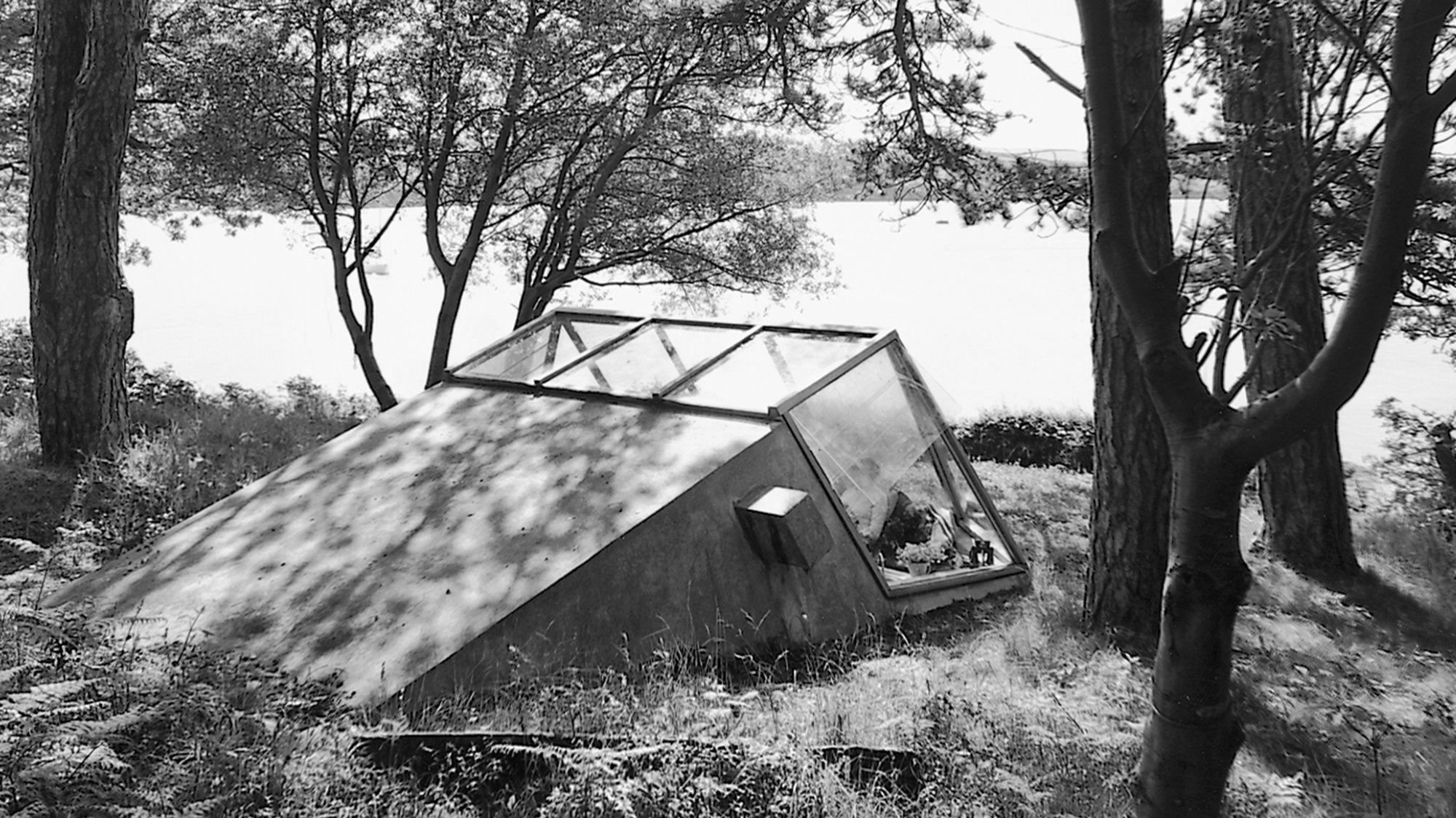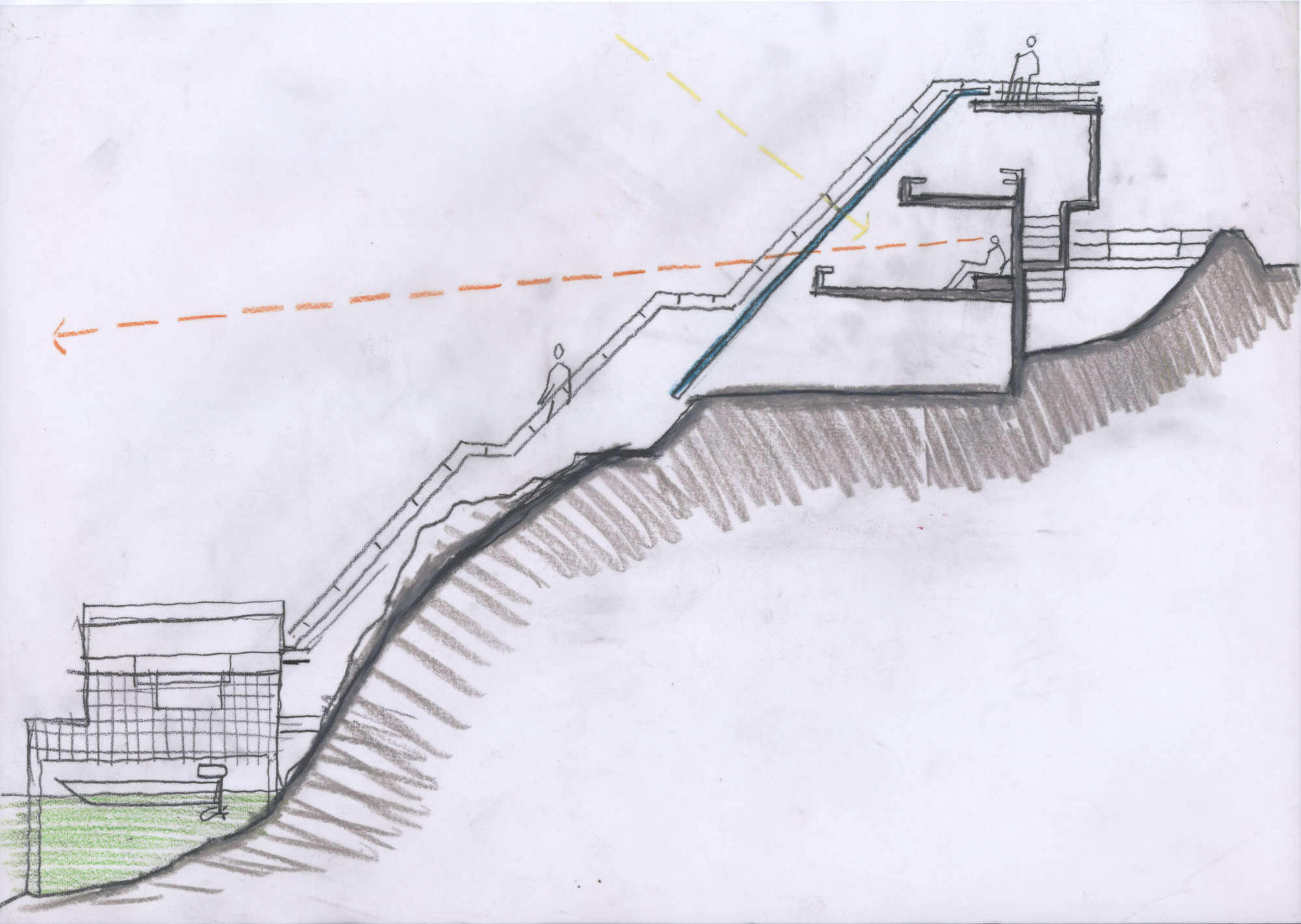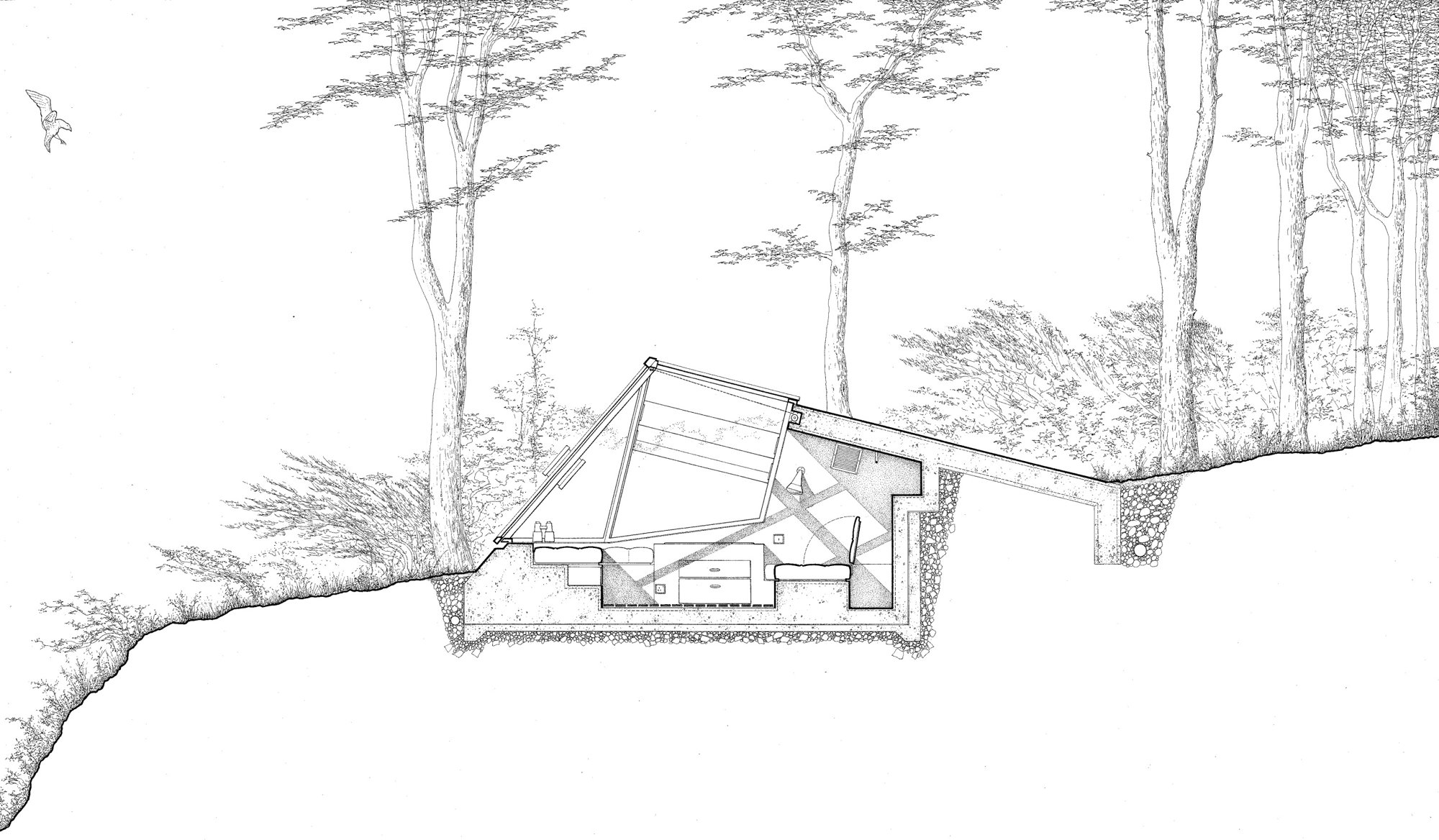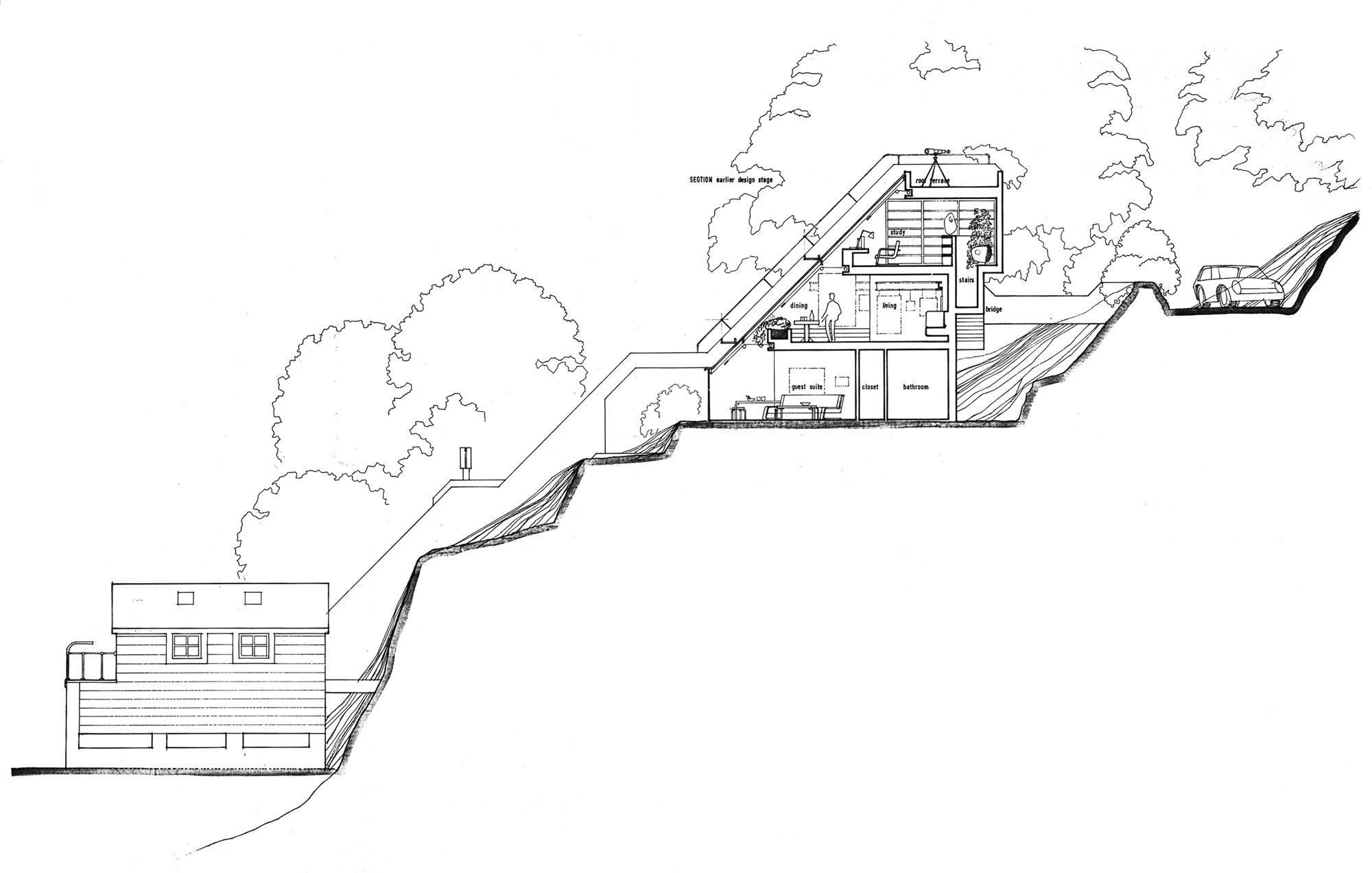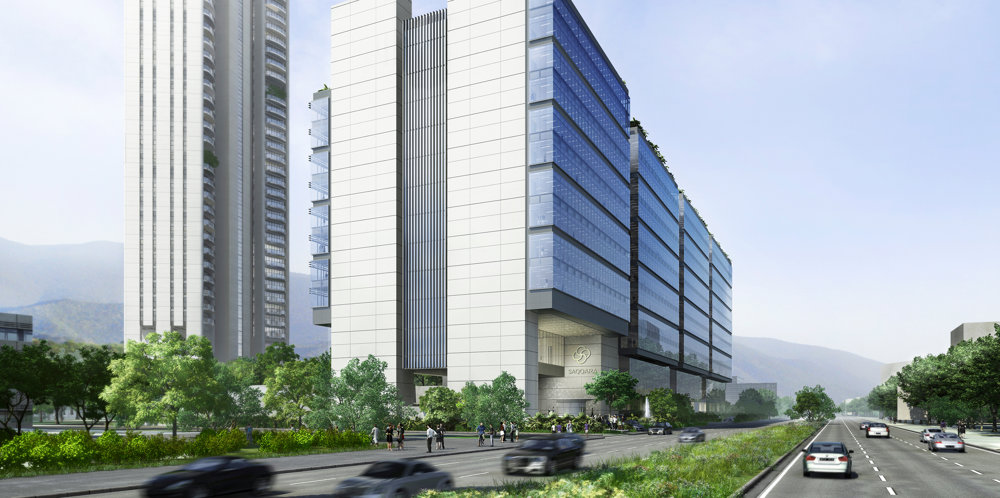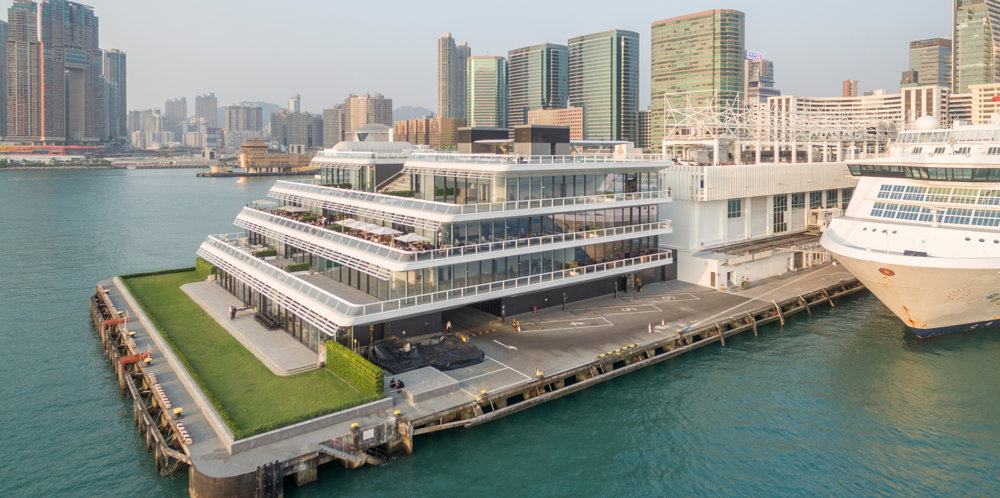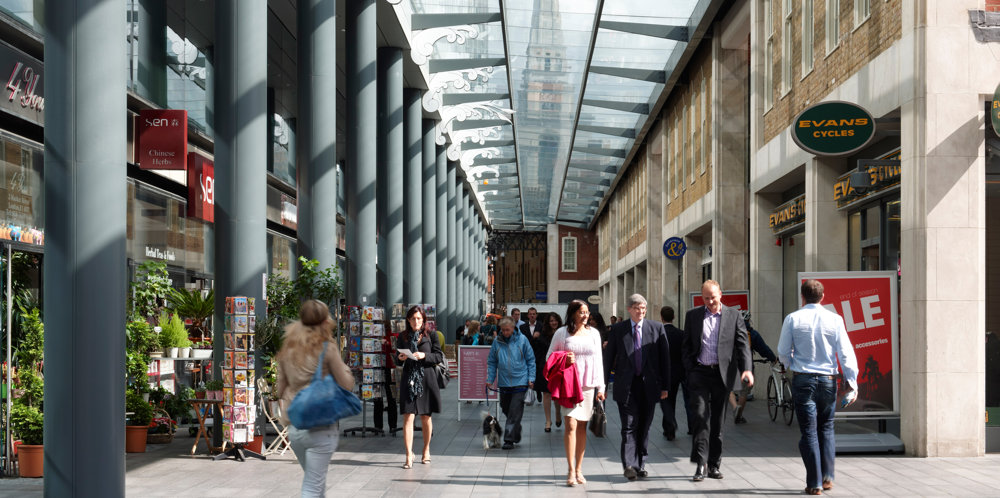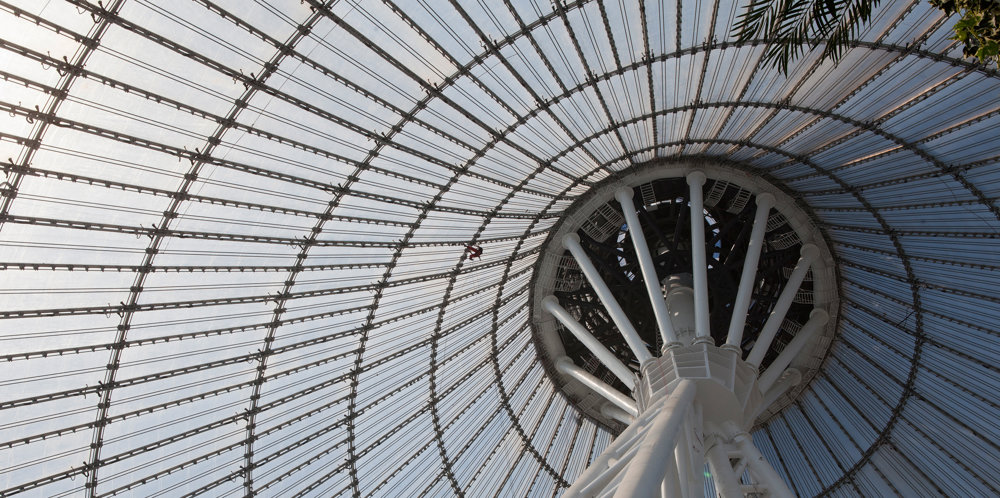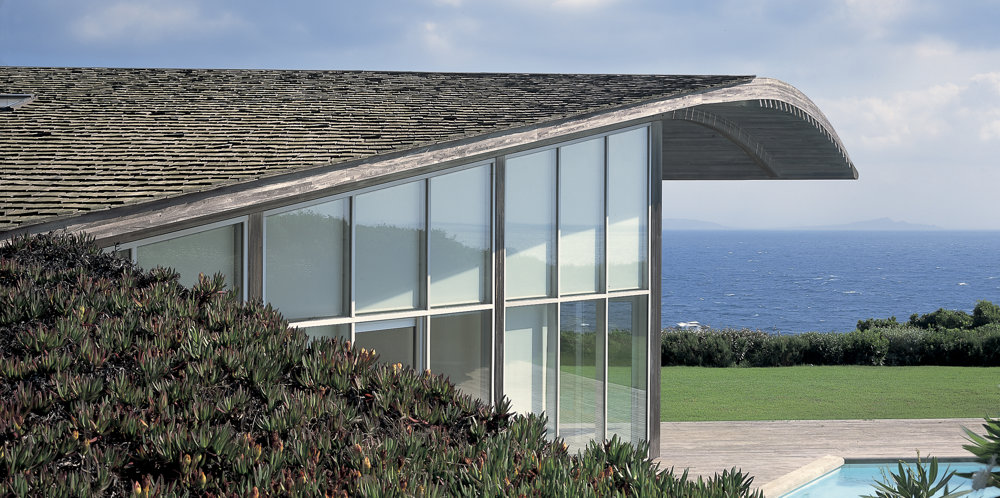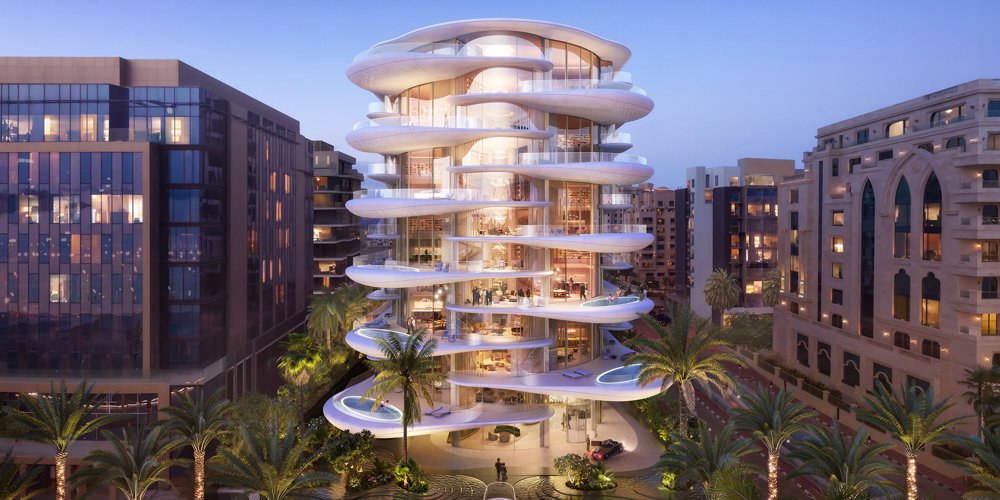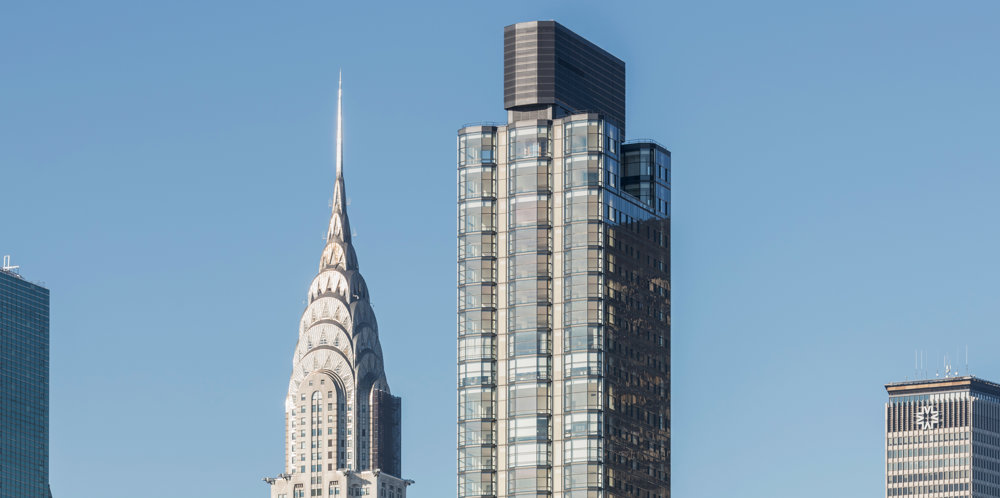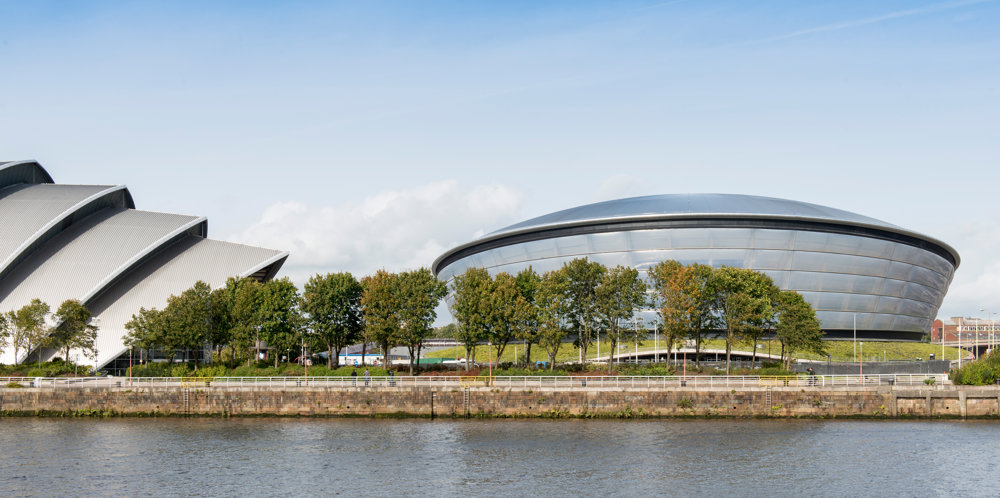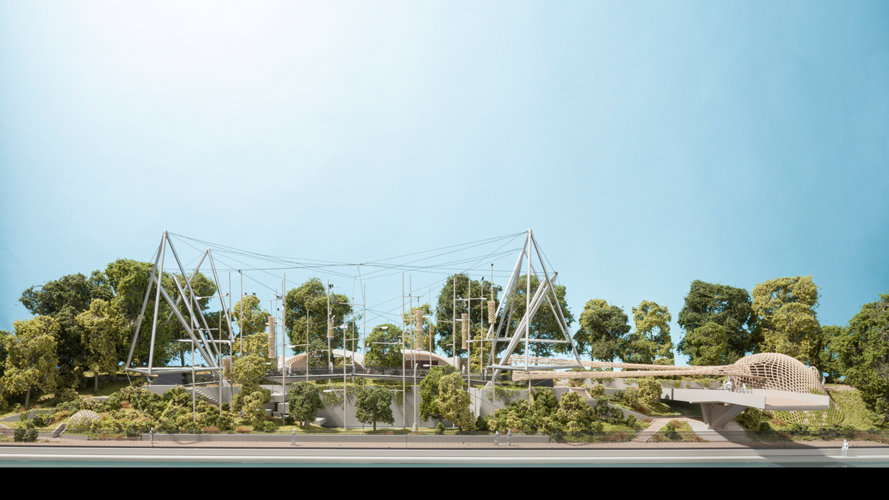Built on a steeply sloping site, this private house was designed to exploit a sequence of classically Cornish views and reveal an architecture informed almost entirely by the topographies of its site. Looking south towards the broad sweep of the Fal Estuary, west towards a secluded creek and north along the valley above, its rooms fan out towards each of these different points. The house itself is organised around two routes. The first is external and visually divides the building in two, leading from the road access above, across a bridge to the front door and down a flight of steps to the waterfront. The other is internal, in the form of a toplit picture gallery. This internal axis follows the contours of the site and forges all the living spaces into a continuum, starting at the highest roof terrace and ending as a path to the underground garage.
Like other Foster projects of this period, Creek Vean mixes traditional materials - honey-coloured concrete blocks and blue Welsh-slate floors - with modern industrial components. Employing a similar formal vocabulary, a small gazebo ‘retreat’ is located near the house on a favourite riverside picnic spot. A complex, crystalline polyhedron, the glassy structure breaks the surface of the sloping bank and faces towards the sea like the cockpit of a plane or boat. The trapezoid concrete shell, partly sunk into the ground as the first in a series of dug-in Foster buildings, is splayed outwards to accommodate seating, a small cooker and a sink, and offers a secluded den from which one can take in commanding views of the estuary below.
Since their completion in the mid 1960s, the planting around both the main house and retreat has been allowed to grow relatively untamed, so that now both structures appear to have receded into the surrounding landscape. The house’s grass covered steps and roof – shades of the later Willis Faber building – have encouraged this process. Quite deliberate, this encroachment allows Creek Vean to play off the ambiguity afforded by its apparent, almost camouflaged, invisibility from the outside looking in, and the expanse and totality of the views it provides from inside its rooms looking out.









